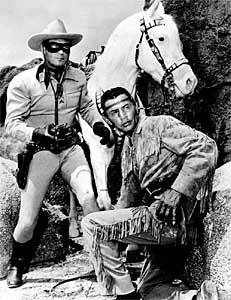By Ajinur Setiwaldi
“I don’t think whatever American Indians bring to the table in terms of their own distinct culture, language and customs should be ignored in the goal of fair portrayal in the media,” Carstarphen said. “But the challenge is to reflect the complexities. There is no ‘one way fits all.’”
The media is a powerful force in the development of ideas and images, Carstarphen said.
“If these things are repeated over and over again through mass media, the rest of us accept them as the truth,” Carstarphen said.
The media influences how we identify people, and the imagery associated with American Indians through the media is stuck in the past, Sanchez said.
“In a recent study I completed, 100 percent of fourth graders drew pictures of Indians in 17th century garb—beads and feathers, breech cloths and standing in front of tepees,” Sanchez said. “American Indians are the only ethnic cultures that continue to have their identities continually shaped by the media as we existed 300 years ago and not as cultures that have evolved or progressed beyond the beads-and-feathers image.”
Carstarphen said that their work also looks to media issues through a historical lens.
American Indians were perceived as threats and obstacles to expansion, and our media tried to justify the atrocities against American Indians by creating a certain image of them, Carstarphen said.
“Our media depicted them as savages, heathens or simplistic,” Carstarphen said.
For more on the subject, see Why Tonto Matters and Thousands of Indian Movies and TV Shows.
Below: The mass media teaches a generation that Indians are secondary and servile to the white man. Note that it doesn't matter which tribe Tonto comes from or whether his costume is authentic. The overall Native theme is that Indians are less important than whites. And that's something most viewers won't question as a fiction.


No comments:
Post a Comment